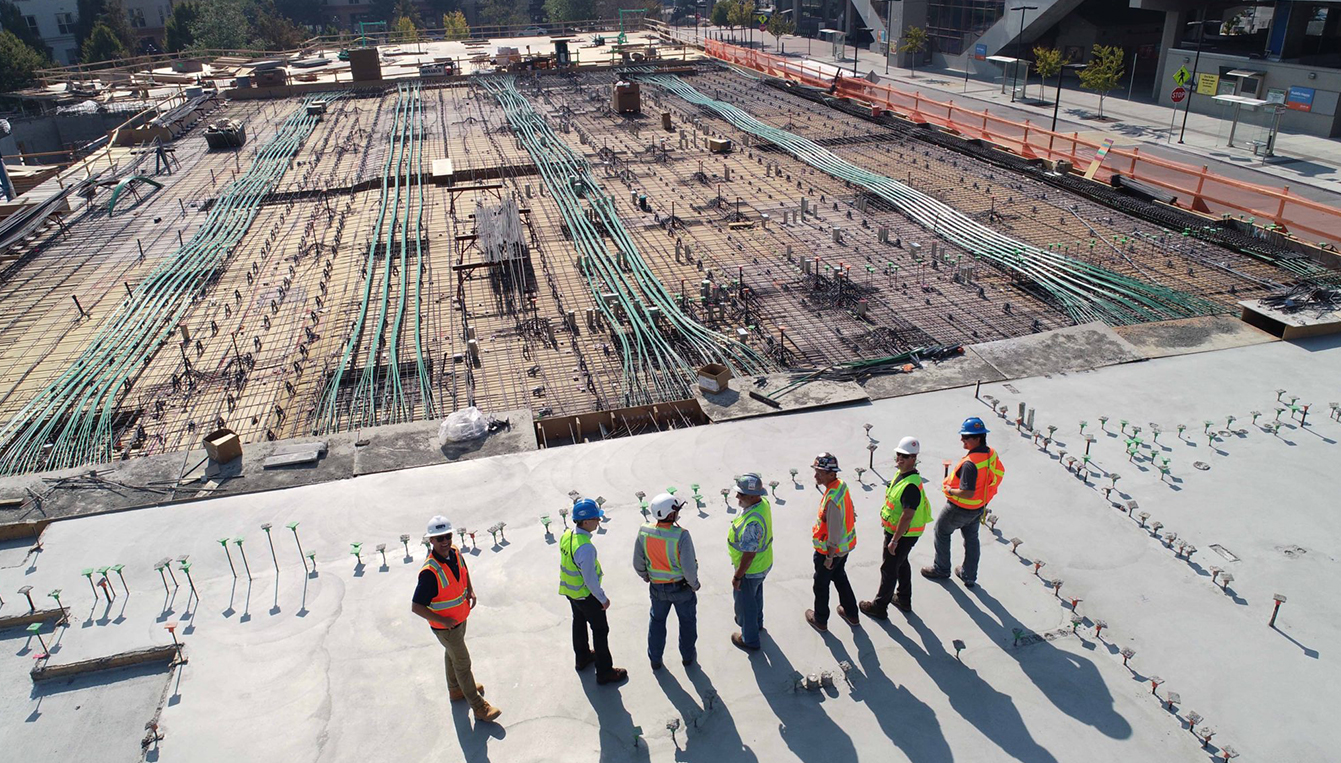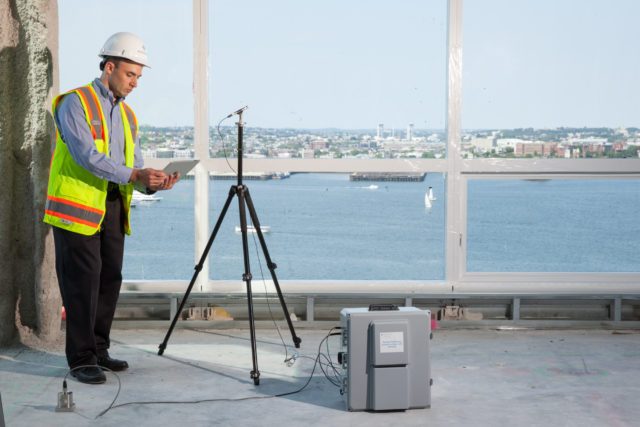David L. Bowen
Product Sound | Market Leader
Labs + Sensitive Facilities | Market Co-Leader
Principal

There are many times when companies, architects, universities, hospitals and the like have contacted us with a need to characterize the vibration environment in particular areas within an existing facility, or in the general area where a new building is to be constructed. Often the reason is related to the placement of new or soon to be relocated vibration-sensitive equipment such as electron microscopes, mass spectrometers, laser-based measurement systems, MRI machines, etc. The question then to answer is, “Is the existing vibration in these areas likely to be low enough to allow for proper operation of the sensitive equipment?”
To help answer this question we typically configure and then install one or more of our customizable vibration monitoring systems in the areas of concern, and leave them there for a period of time long enough to capture representative data that will adequately characterize the vibration environment. These systems employ sensitive accelerometers mounted to the floor, arranged to measure vibration in a direction perpendicular to the floor and, optionally, in the two orthogonal directions parallel to the floor. To get the most out of such a vibration survey, the length of the monitoring period should be long enough to capture a snapshot that truly represents the typical vibration levels as they may vary over time. Sometimes, but not often, a few minutes can be long enough if the vibration is dominated by a strong steady source. More typical, though, is the situation where non-stationary vibration sources are present. Such sources can range from road or rail traffic outside the building to occupants walking in nearby hallways or staircases to door closures and elevator operations to various types of specialized lab equipment and/or building mechanical equipment cycling on and off. In many of these cases the monitoring period should ideally be a few days, or at the very least a few hours during a time of day encompassing typical activities that take place within the building.
Once our monitoring equipment is installed and up and running, we often get asked something along the lines of, “Should we be careful to tiptoe around and not make any noises?” The short answer to this is, No! The goal, after all, is to capture vibration representative of typical activity, so if that activity will involve people walking around, opening and closing doors, talking or even shouting then don’t stop just because we’re measuring vibration! The only exception to this is the need to be careful right around the vibration sensors themselves, just so they won’t accidentally get kicked or stepped on (we usually try to cordon them off in an obvious way). On the other hand, non-typical activity needs to be avoided – one of the most common examples of this is heavy construction, either somewhere within the building or nearby outside. Unless it is anticipated that the equipment of concern needs to be operating during such construction, conducting the vibration survey when construction is taking place should generally be avoided.

But, to more completely answer the question of whether the existing vibration in a particular area is likely to be problematic or not, we also need to know something about the maximum vibration levels that the particular pieces of equipment of concern can tolerate. These levels are often a function of the vibration frequency, and while many manufacturers do publish detailed vibration specs for their equipment, others do not. If such vibration specs are available, then they should be passed on to us before we start the monitoring so that our systems can be optimally configured to analyze the raw data to readily produce levels in a form that can be directly compared against these specs.
If vibration specs for a particular piece of equipment are not available then we have a couple of options. One is to use specs that we know exist for comparable types of equipment, and the other is to collect some representative “baseline” vibration data in the vicinity of an existing installation where it is known that the equipment is performing satisfactorily. This latter option is generally the best choice if such an installation in fact exists, although the baseline levels obtained will of course not necessarily reflect the absolute upper limit of tolerable vibration, but at least can provide a conservative limit to be used for comparison against levels obtained in the targeted space.
Since vibration levels in buildings are not generally constant, but instead vary over time in an often non-periodic fashion, quantifying the levels with just a simple single number metric is usually not sufficient. Equipment specs will sometimes state what the maximum permitted floor vibration level is for satisfactory operation (as opposed to a level high enough to actually damage the equipment), but even this usually needs some interpretation since it might be okay to reach such a level if it happens rarely versus more often. For these reasons we often rely on statistical descriptors to better convey a sense of how often a certain level was reached. For example, we may present not only the absolute maximum/peak vibration levels observed within particular time intervals over the entire duration of the monitoring period, but also the slightly lower “L1“ or ”L10“ percentile levels met or exceeded just 1% or 10% of the time, as well as the average levels and the levels reached 90% or 99% of the time (these latter quantities are often used as indicators of the true background levels). End users can then utilize this information to help make more informed decisions on whether or not the observed, non-constant levels are likely to be problematic for anticipated usage patterns for particular pieces of sensitive equipment.
So, if you’re considering a vibration survey then hopefully the points I’ve raised here can help you to get the most out of it.